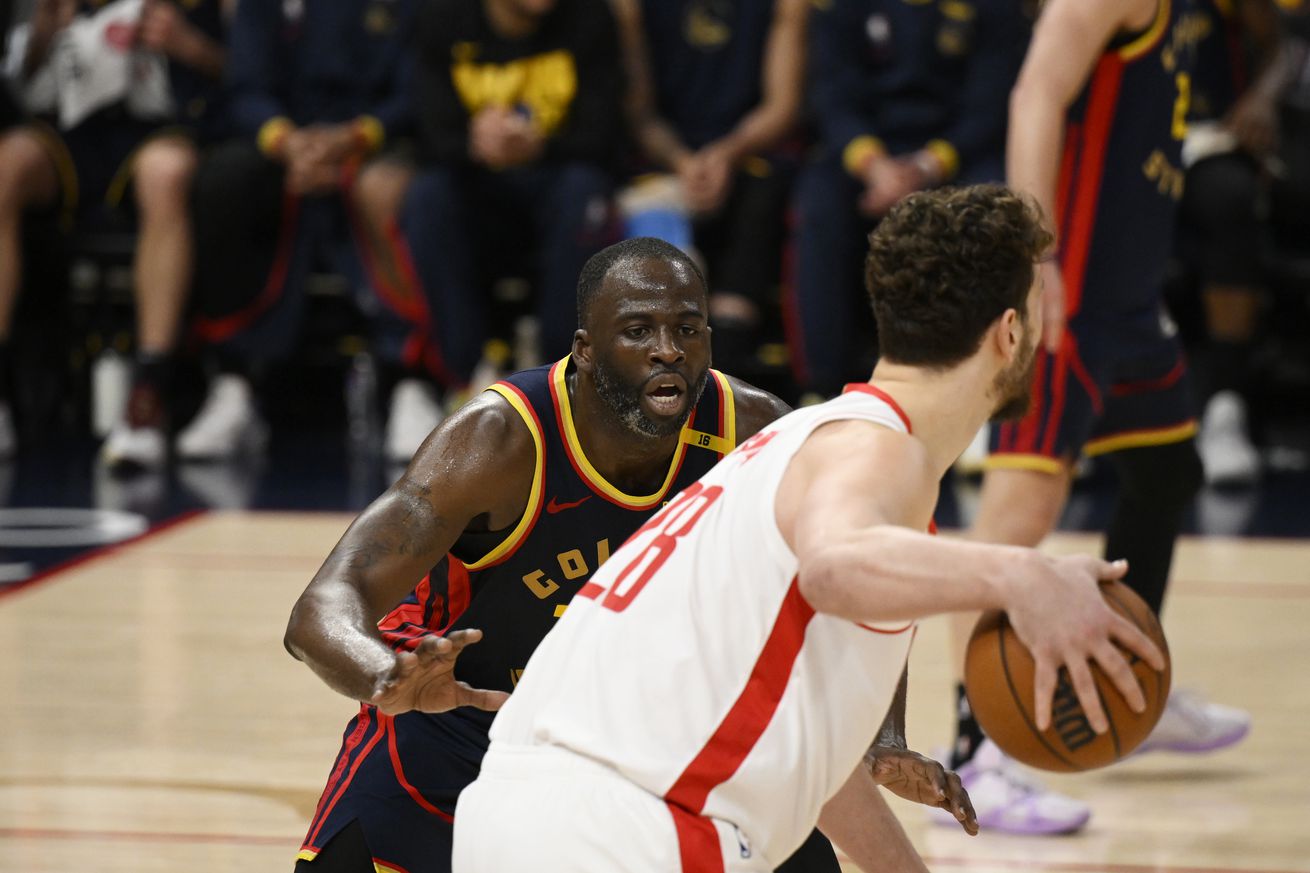
Dubs go up 3-1 over the Rockets as the series shifts back to Houston.
Although there were plenty of key moments in this bruising 109-106 win over the Houston Rockets to take a commanding 3-1 series lead, there were a series of events that led to the climax of the game, one that required the Golden State Warriors to stop the Rockets from scoring in order to hold on to a precarious one-point lead. Those preceding events informed what the Warriors needed to do in order to seal the game.
Such events consisted of a common theme, one that resulted in Fred VanVleet having a breakout scoring and shooting game that nearly did the Warriors in. He finished with 25 points on a scalding 93% True Shooting mark. All but one of his points (a free throw) came on eight three-pointers made out of 12 attempts. VanVleet — who was having a subpar shooting season and series before this game — was seeing the ocean and promptly throwing the ball into it, to the Warriors’ chagrin.
However, part of that was helped by the coverages the Warriors were playing on VanVleet. In the first three contests, the Warriors had no qualms playing various forms of drop coverage against pick-and-rolls with VanVleet as the ball handler, essentially daring him to pull up and living with the result.
As it turns out, the Warriors continuing to live with the result almost ended up killing them in the process. Note how the Warriors continued to be content with VanVleet pull ups around screens — and continuing to be content with them despite the apparent arrival of a VanVleet heater game:
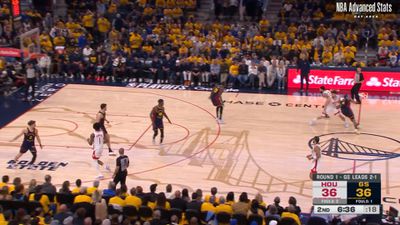
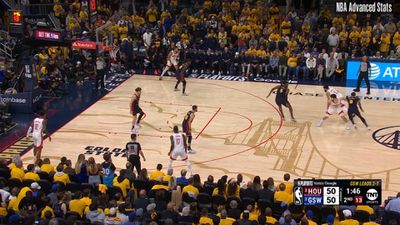
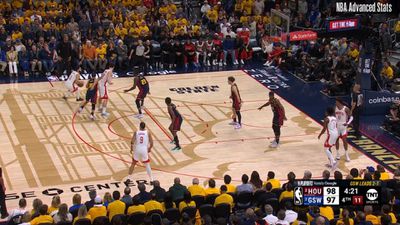
Not to mention, other non-pick-and-roll instances of VanVleet left open for three because of an apparent lack of connectivity and awareness. For example: With Trayce Jackson-Davis inserted in the game due to Draymond Green being burdened with five personal fouls in the third quarter, Alperen Şengün received the ball in the left block with VanVleet one pass away on the left slot. Brandin Podziemski decided to leave VanVleet to spring a double from the top.
Most teams in the NBA prefer to send a double from the top instead of from the bottom (i.e., from the weak side) simply because the other defenders have a better view of where and when the double is sprung if it originates from the top, allowing them to rotate accordingly. Granted, to the Rockets’ credit, second-side movement made it difficult for the rest of the defenders to rotate behind the double.
But if you’re Steph Curry below, it behooves you to be aware of the double — and react accordingly by rotating toward VanVleet. However, if there’s no attempt to rotate whatsoever, then why double in the first place?
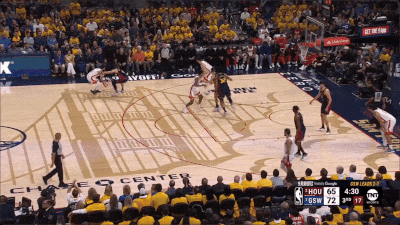
But the crux of the argument for the Warriors’ need for flexibility and adaptability with their coverages came on another pick-and-roll possession — one that didn’t have VanVleet be the ball handler, but the screener. As if they were hit by something out of left field, the Warriors were caught with their pants down as Ime Udoka dialed up an inverted pick-and-roll with Şengün as the ball handler and VanVleet as the screener.
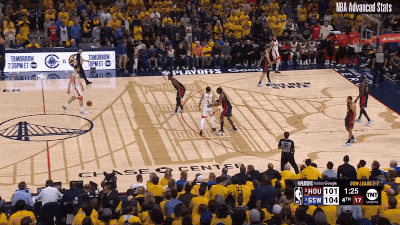
There was clearly a miscommunication between Jimmy Butler and Buddy Hield above: Hield thinking “switch,” Butler thinking “fight over the screen and stay home.” The breakdown in communication results in an open VanVleet, not ideal for a team on the receiving end of a breakout shooting performance.
Keep the inverted pick-and-roll possession above in mind for the climax — and let us shift our attention back to the beginning of the game, where Draymond was yet to be in foul trouble and therefore, free to use every physical trick in the book to bother, annoy, and knock Şengün off kilter in the post. The Rockets went to Şengün at the nine-minute mark of the first quarter, cleared the right side, and let him operate in the right block against Draymond, which turned out to be an unwise decision:
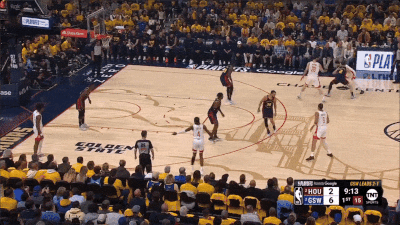
Operating with the assumption that:
- Şengün mostly prefers to go to his right hand
- Şengün is more comfortable the closer he is to the rim
Draymond tries his best to act as an immovable barrier to prevent assumption #2 above; when he is unable to keep Şengün contained in that regard, he takes note of assumption #1 by forcing Şengün to his left hand. Draymond’s assessment proves to be correct, and Şengün misses the bunny.
In a possession during the beginning stages of the third quarter, take note how Draymond allows Şengün to spin to his right while dribbling the ball with his left, which in most situations — against other defenders — is often a point of no return. But with the knowledge that Şengün would prefer to finish with his dominant hand, Draymond gives Şengün a slight nudge underneath the rim, knowing that Şengün would be slightly delayed by his attempt to switch hands. That small delay is all that Draymond needs to take away the angle and knock Şengün off kilter:
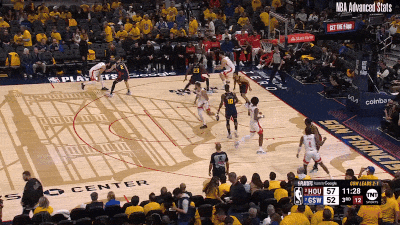
Draymond’s cerebral approach in these situations often goes under the radar, blanketed by the more aesthetically pleasing defensive possessions and, to the chagrin of Warriors fans, smothered by the extracurriculars. A series of altercations and brouhahas combined to give Draymond a technical foul (a puzzling one), a flagrant foul (perhaps more warranted, but fortunate given how he was one technical foul away from being ejected), and five personal fouls at the eight-minute mark of the third quarter, which forced Steve Kerr to bench Draymond for a prolonged period of time.
In the stretch thereafter, Şengün rained scorched earth upon the Warriors in the paint, using a variety of spins, footwork, and soft-touch finishes against defenders less equipped to deter him.
Even when Draymond reentered in the middle of the fourth quarter to close out the game, the Rockets went back to what previously worked — and thus, we return to the inverted pick-and-roll between Şengün and VanVleet. In the possession below, Şengün handles the ball and calls for VanVleet to screen for him. Unlike Butler and Hield, Draymond and Gary Payton II execute a clean switch, but Payton ends up being too disadvantaged on an island against Şengün:
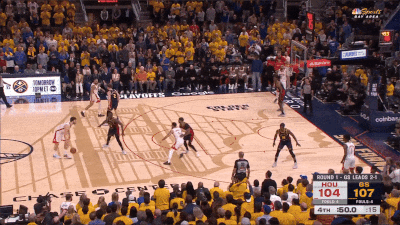
The inverted pick-and-roll possession above — and the one that came before it — ultimately informs what the Warriors decide to do when Udoka goes back to the inverted pick-and-roll in a crucial juncture of the game, with his Rockets down by a single point and needing to score.
As such, take a closer look at what Payton does with VanVleet, who lifts from the right corner to get ready to set the screen:
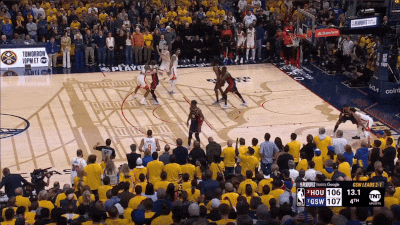
Payton’s denial on VanVleet forces the Rockets to abort their initial plan — and resort to Şengün isolating against Draymond.
With the two aforementioned assumptions in mind, Draymond definitely took note of assumption #1 — and stonewalled Şengün’s attempt to power through toward the rim. As such, while Şengün does manage to get a shot off with his right hand, Draymond not allowing him to get to a more comfortable range, coupled with a good contest, results in a miss:
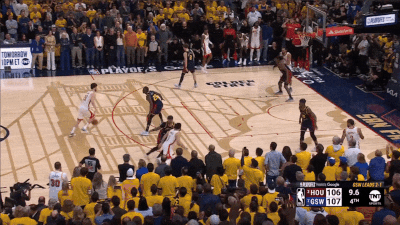
With help from a monstrous rebound by Butler — who finished the game with 27 points on 12 shot attempts, a perfect 12-of-12 from the free-throw line, and 78.1% True Shooting — and two-way production from Podziemski (26 points) and Hield (15 points, as well as “setting the tone defensively” as Kerr half-jokingly put it post-game), Draymond — the Warriors’ alpha and omega, the person who was there both at the beginning and at the end of their defensive effort — spearheaded a winning performance, on a night where Curry (17 points on only 13 shot attempts) had, by his standards, a subpar night. Even so, they return to Houston with the series nearly in hand.